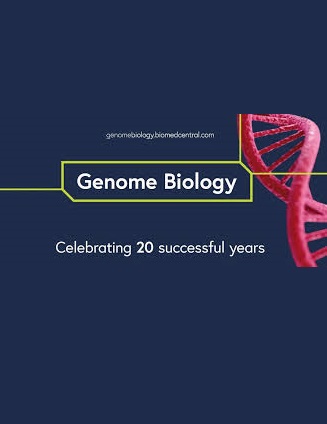ASPM mediates nuclear entrapment of FOXM1 via liquid-liquid phase separation to promote progression of hepatocarcinoma
IF 10.1
1区 生物学
Q1 BIOTECHNOLOGY & APPLIED MICROBIOLOGY
引用次数: 0
Abstract
Fork-head box protein M1 (FOXM1) plays critical roles in development and progression of multiple cancers, including hepatocellular carcinoma (HCC). However, the exact regulatory hierarchy of FOXM1 remains unclear. Here, a genome-wide screen is performed to identify intranuclear proteins that promote FOXM1 transcription activity via liquid–liquid phase separation (LLPS). Abnormal spindle-like microcephaly associated (ASPM) is identified to interact with FOXM1 protein via LLPS and enhance its stability by preventing proteasome-mediated degradation. ChIP-sequencing data show ASPM and FOXM1 co-occupy the promoters of multiple genes to promote their transcription, enhancing FOXM1-driven oncogenic progression. In functional experiments, inhibition of ASPM suppresses tumor growth of HCC cells in vivo and in vitro, while overexpression of ASPM has opposite effects. Importantly, reconstitution of FOXM1 partially compensates for the weakened proliferative capacity of HCC cells caused by ASPM silencing. Intriguingly, FOXM1 binds to the promoter region of ASPM and transcriptionally activates ASPM expression in HCC cells. Furthermore, we find that a higher co-expression of ASPM and FOXM1 significantly correlates with poor prognosis in HCC patients. It indicates a double positive feedback loop between ASPM and FOXM1 which coordinately promotes the aggressive progression of HCC. Collectively, we demonstrate that LLPS and transcriptional regulation form an oncogenic double positive feedback loop between ASPM and FOXM1. This provides a rationale strategy to treat HCC by targeting this mechanism.ASPM 通过液-液相分离介导 FOXM1 的核禁锢,促进肝癌的进展
叉头盒蛋白 M1(FOXM1)在包括肝细胞癌(HCC)在内的多种癌症的发生和发展过程中发挥着关键作用。然而,FOXM1的确切调控层次仍不清楚。本文通过液-液相分离(LLPS)技术进行了一次全基因组筛选,以确定能促进FOXM1转录活性的核内蛋白。研究发现,异常纺锤体样小头畸形相关蛋白(ASPM)可通过液-液相分离与FOXM1蛋白相互作用,并通过阻止蛋白酶体介导的降解来增强其稳定性。ChIP 测序数据显示,ASPM 和 FOXM1 共同占据多个基因的启动子以促进其转录,从而增强 FOXM1 驱动的致癌进展。在功能实验中,抑制 ASPM 可抑制体内和体外 HCC 细胞的肿瘤生长,而过表达 ASPM 则会产生相反的效果。重要的是,FOXM1 的重组可部分弥补 ASPM 沉默导致的 HCC 细胞增殖能力减弱。有趣的是,FOXM1 与 ASPM 的启动子区域结合,并转录激活 ASPM 在 HCC 细胞中的表达。此外,我们还发现 ASPM 和 FOXM1 的高共表达与 HCC 患者的不良预后显著相关。这表明 ASPM 和 FOXM1 之间存在双重正反馈循环,共同促进了 HCC 的侵袭性进展。总之,我们证明了 LLPS 和转录调控在 ASPM 和 FOXM1 之间形成了致癌的双重正反馈环。这为针对这一机制治疗 HCC 提供了合理的策略。
本文章由计算机程序翻译,如有差异,请以英文原文为准。
求助全文
约1分钟内获得全文
求助全文
来源期刊

Genome Biology
Biochemistry, Genetics and Molecular Biology-Genetics
CiteScore
21.00
自引率
3.30%
发文量
241
审稿时长
2 months
期刊介绍:
Genome Biology stands as a premier platform for exceptional research across all domains of biology and biomedicine, explored through a genomic and post-genomic lens.
With an impressive impact factor of 12.3 (2022),* the journal secures its position as the 3rd-ranked research journal in the Genetics and Heredity category and the 2nd-ranked research journal in the Biotechnology and Applied Microbiology category by Thomson Reuters. Notably, Genome Biology holds the distinction of being the highest-ranked open-access journal in this category.
Our dedicated team of highly trained in-house Editors collaborates closely with our esteemed Editorial Board of international experts, ensuring the journal remains on the forefront of scientific advances and community standards. Regular engagement with researchers at conferences and institute visits underscores our commitment to staying abreast of the latest developments in the field.
 求助内容:
求助内容: 应助结果提醒方式:
应助结果提醒方式:


